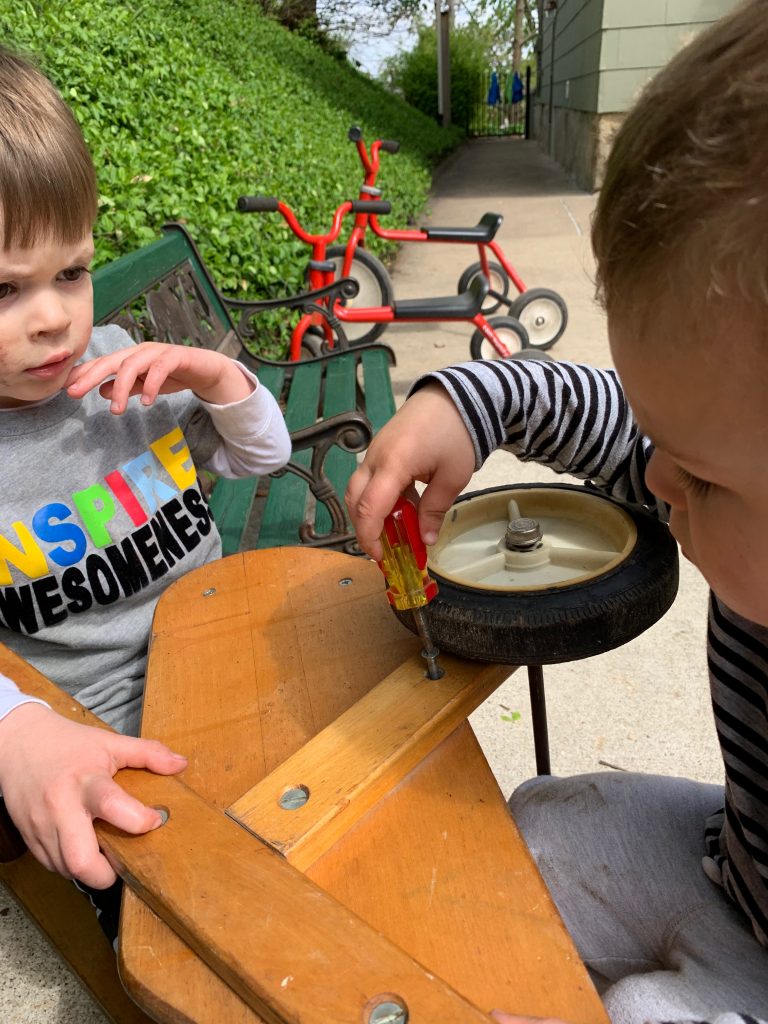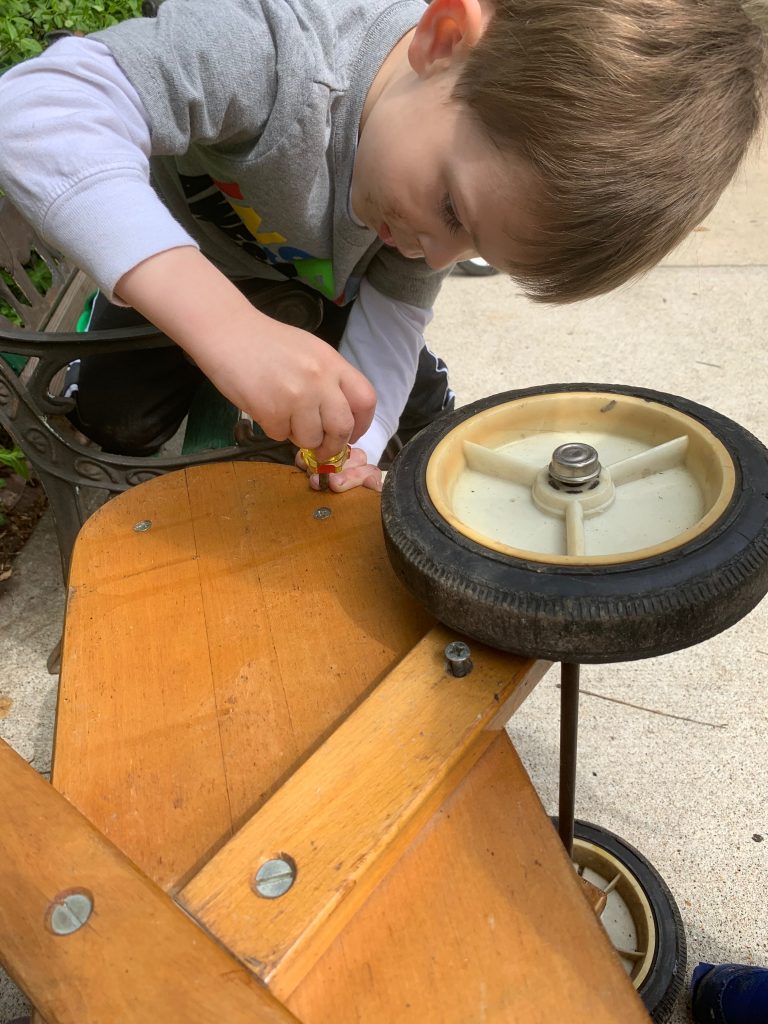Fix-It Fun!
“Miss Diann, I need a hammer! Look! Look! See? I need a hammer!”
Three-year-old Jonathan—our “fix-it man”—is pointing to a loose wagon screw that needs his immediate attention. We turn the wagon on its side to take a closer look at the wheel. Yes! We definitely have a loose screw.
“Do you need a hammer to pound it in?” I ask.
“Yes!” exclaims Jonathan, nodding vigorously.

I return with a hammer, but Jonathan immediately notices that the tool in my outstretched hand is not the right one for the job.
“No, not that one!” he says with a hint of exasperation in his voice. “I need a hammer! Look, it has a line. I need a hammer to fit in there to turn it and make it tight.”
This was not Jonathan’s first rodeo. He knew his way around a tool bench, just not by name. Allowing and encouraging children to play with traditional carpentry tools can enhance their knowledge, expand their vocabulary and create excitement about learning.
“Oh, let me look again,” I reply.
I return with three tools. “Jonathan, I have a hammer, a screwdriver and a wrench. Will one of these work?”
Jonathan’s eyes light up. “Yes, I need a screwdriver!” He jumps with joy and gets straight to work.
My little friend is a science machine. This is logical thinking at its finest! We have deductive reasoning and problem-solving at a three-year-old’s pace.
Jonathan is also working with force and motion. Having the vocabulary to explain that he needed a tool that would fit in that “line” demonstrated that he could imagine the type of tool that was needed.

Early experiences like this one will deepen Jonathan’s understanding of how objects fit together. This is exploring spatial relationships, fine-motor skill development and spatial reasoning—all in one activity!

Jonathan’s spark of excitement ignites the interest of his friend, Harrison, who joins in. Harrison is also in need of a screwdriver because he has decided that the screws on every bicycle and wagon in the yard need a good tightening.

As Harrison and Jonathan discuss their actions, their understanding of spatial relationships, shapes, sizes and measurement deepens. High-quality hands-on experiences like these provide opportunities for children to develop a richer vocabulary as they problem-solve out loud with comments such as:
“My screwdriver isn’t working.”
“No, you need to turn it this way! Look, it’s going down!”

Children learn to understand and use information when they have direct contact with materials. Drawing a line from a hammer to a nail on a worksheet does not give children the same educational benefits as an actual hands-on learning experience.

When children explore the different ways that they can manipulate materials—by rotating them, cutting them in half or transforming them into different shapes by constructing or deconstructing them—they are learning how materials relate to one another and the space around them. Working with real tools and materials is critical to fostering children’s understanding of spatial relationships.
This is science, technology, engineering and math all wrapped up in an afternoon of play. This is how we build a STEM foundation.
So take your young friends outside for an afternoon of STEM exploration. Check your wagons, bikes, trikes and other outdoor toys to see if their screws might “need some tightening.” No need to develop a curriculum. It’s already pre-loaded into the activity.
While you’re at it, don’t forget to document the learning standards that you’re meeting and check them off of your list!
tools will help the kids needs to learn how to fix things
let them fix things